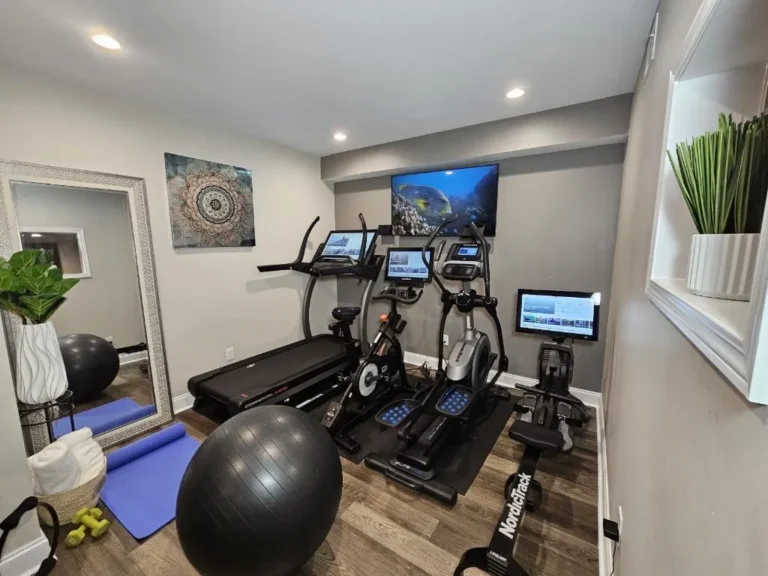Improve Fitness and Lower BP Through Weight Training
Regular exercise is key for a heart-healthy lifestyle. J. Sawalla Guseh, MD, a sports cardiologist, says regular exercise helps lower blood pressure over time. This is true, even though blood pressure might go up during a single strength training session.
It’s important to know the different blood pressure categories. This chart shows the various levels:
Regular physical activity, like weight training, can greatly improve your fitness. It also helps manage blood pressure better. You can improve fitness and lower BP through weight training.
Key Takeaways
- Regular exercise is crucial for a heart-healthy lifestyle.
- Weight training can help lower blood pressure over time.
- Understanding blood pressure categories is vital for effective management.
- Regular physical activity improves overall fitness.
- Weight training contributes to better blood pressure management.
Understanding Blood Pressure and Its Impact on Health
Blood pressure shows how hard blood pushes against artery walls. It’s a key sign of health and helps prevent heart diseases. It’s measured in millimeters of mercury (mm Hg) and has two numbers: systolic and diastolic.
The American College of Cardiology and the American Heart Association say normal blood pressure is under 120/80 mm Hg. Managing blood pressure effectively is key to avoiding heart disease and stroke.
What Blood Pressure Numbers Mean
Blood pressure numbers fall into different ranges, each showing a different health risk. These ranges help doctors diagnose and treat high blood pressure. A reading under 120/80 mm Hg is normal. Numbers between 120-129/80 mm Hg are elevated, and 130/80 mm Hg or higher is high blood pressure.
The American Heart Association warns that high blood pressure is dangerous. It can cause heart disease, heart failure, and stroke. Knowing these ranges is the first step in managing blood pressure and protecting your health.
The Health Risks of High Blood Pressure
High blood pressure, or hypertension, is a big risk for heart diseases. It can cause heart failure, coronary heart disease, stroke, and kidney disease. If not managed, these risks are serious.
Health experts say controlling high blood pressure is crucial. Lifestyle changes and, if needed, medication can lower these risks. This shows how vital it is to understand blood pressure and its health effects.
The Connection Between Weight Training, Fitness and Blood Pressure
Adding weight training to your fitness routine can boost your fitness and help control blood pressure. Regular exercise, like weight training, is good for your heart health.
Weight training strengthens the heart. This lets it pump blood more efficiently. This means less pressure on blood vessels, which lowers blood pressure. Exercise affects blood pressure in many ways.
How Exercise Affects Blood Pressure Mechanisms
Exercise impacts blood pressure in several ways. It improves heart function, makes blood vessels more flexible, and lowers resistance in blood vessels. Regular activities, like weight training, can lead to:
- Improved heart function and efficiency
- Enhanced blood vessel elasticity
- Better overall circulation
Why Weight Training Specifically Helps Lower BP
Weight training is great for lowering blood pressure. It builds muscle and increases strength. As muscle grows, so does your metabolism, helping with weight control and lowering blood pressure.
Weightlifting for hypertension offers long-term benefits. It’s a key part of a fitness plan to lower blood pressure with exercise.
Understanding the link between weight training, fitness, and blood pressure helps improve heart health. It also boosts overall well-being.
Blood Pressure Categories: Know Your Numbers
Knowing your blood pressure is key to keeping your heart healthy. It’s measured in millimeters of mercury (mmHg). It shows two numbers: systolic (top number) and diastolic (bottom number).
The American Heart Association sets blood pressure categories. These help you understand your heart disease risk. They also guide you in managing your blood pressure.
Normal, Elevated, and Hypertensive Ranges
Blood pressure falls into several ranges:
- Normal blood pressure: Less than 120/80 mmHg
- Elevated blood pressure: Systolic between 120-129 and diastolic less than 80 mmHg
- Stage 1 hypertension: Systolic between 130-139 or diastolic between 80-89 mmHg
- Stage 2 hypertension: Systolic 140 or higher or diastolic 90 or higher mmHg
If your blood pressure is high, you’ll likely need more than just exercise to lower it, says the American Heart Association.
When to Consult a Doctor Before Starting Exercise
Always talk to your doctor before starting a new exercise routine, especially with high blood pressure. This is crucial if:
- You have stage 1 or stage 2 hypertension.
- You’re feeling dizzy, have chest pain, or find it hard to breathe.
- You’ve had heart disease or other heart problems.
Your doctor can suggest safe and effective exercises for you. They’ll help you plan the best fitness routine.
5 Key Benefits of Weight Training for Cardiovascular Health
Weight training is more than just building muscle. It also boosts cardiovascular health. Adding weight training to your routine can greatly improve heart health and overall well-being.

Improved Heart Function and Efficiency
Regular weight training makes your heart stronger. This means it can pump blood better. It reduces the strain on your heart and blood vessels.
Enhanced Blood Vessel Elasticity and Circulation
Weight training makes your blood vessels more flexible. It also improves blood flow. This leads to better heart health and lowers the risk of heart disease.
Reduced Resting Heart Rate and Recovery Time
Weight training lowers your resting heart rate and recovery time. This shows you’re getting fitter and healthier.
Better Body Composition and Metabolic Health
Weight training helps you build muscle and boosts metabolism. This improves metabolic health and lowers the risk of chronic diseases.
Stress Reduction and Hormonal Balance
Regular weight training also reduces stress and balances hormones. Exercise is good for your mental health and overall well-being.
In conclusion, adding weight training to your routine greatly benefits cardiovascular health. You’ll see five key benefits that improve your health and lower heart disease risk.
Weight Training and Fitness and Blood Pressure: The Science Explained
Weight training is now seen as a key way to manage high blood pressure. Many studies show it can help lower blood pressure. This is good for your heart health.
Research-Backed Evidence and Clinical Studies
Many studies have looked into how weight training affects blood pressure. They found that it can lower both systolic and diastolic blood pressure. For example, regular exercise can drop diastolic blood pressure by 5 to 8 mm Hg and systolic by 4 to 10 mm Hg.
Clinical studies have also shown its benefits. They followed people over time. This proves weight training is effective in managing high blood pressure.
Long-Term vs. Short-Term Effects on Hypertension
Weight training’s effects on blood pressure are seen both short and long term. At first, the changes might be small. But sticking to weight training can lead to bigger and lasting blood pressure drops.
It usually takes 1 to 3 months to see the first effects. As you keep training, the benefits will grow. This shows why it’s important to keep up with weight training to keep your blood pressure low.
7 Best Weight Training Exercises for Lowering Blood Pressure
Weight training is more than just building muscle. It’s also great for lowering blood pressure. The American Heart Association says to do strength training at least two times a week. This shows how important it is for a healthy heart.
Squat Variations: From Bodyweight to Barbell
Squats are a key exercise for all fitness levels. They strengthen your legs, glutes, and core. Proper form is crucial to avoid injury and get the most benefits.
Deadlift Techniques for Safe Cardiovascular Benefits
Deadlifts work many muscles at once, offering great heart health benefits. To do deadlifts safely, keep your back straight and engage your core. Start with lighter weights and slowly add more to avoid injury.
Chest Press Movements for Upper Body Strength
Chest press exercises build upper body strength. Stronger chest muscles help your heart health. Focus on proper form and controlled movements for the best results.
Row Exercises for Back Strength and Heart Health
Row exercises are key for back strength and heart health. They can be done with dumbbells, barbells, or rowing machines. Engaging your core and maintaining good posture are important for the most benefits.
Overhead Press and Shoulder Training Benefits
The overhead press strengthens your shoulders and upper body. It can be done with dumbbells or a barbell. Proper form and control are key to avoid injury and get the most out of the exercise.
Lunges and Step-Ups for Lower Body Conditioning
Lunges and step-ups target your legs and glutes. They can be adjusted for different fitness levels. Focus on slow, controlled movements for better results.
Core Stabilization Exercises for BP Management
Core stabilization exercises are vital for strength and heart health. A strong core helps with posture and blood pressure. Exercises like planks and Russian twists are great for strengthening your core. Engage your core muscles and keep movements steady and controlled.
Adding these seven weight training exercises to your routine can greatly improve your heart health. It can help lower blood pressure and boost overall well-being. Always talk to a healthcare professional before starting, especially if you have health conditions.
Creating Your Blood Pressure-Lowering Workout Plan
To lower blood pressure, you need a workout plan tailored just for you. First, know your fitness level and health. Always check with your doctor before starting new exercises, especially if you have health issues.
Your workout plan should include a few key things. Use progressive overload to challenge your muscles and heart. Mix up your exercises and add aerobic activities for the best results.
Beginner’s Guide: Starting Safely with Light Weights
Beginners should start with light weights and slowly add more. This prevents injuries and keeps your workouts effective. Start with exercises that work many muscles at once, like squats and lunges.
- Start with bodyweight exercises or light dumbbells.
- Focus on proper form and technique.
- Gradually increase the weight as you become stronger.
Intermediate Program: Progressive Overload Techniques
Intermediate trainees should use progressive overload. This means increasing the weight, how often you work out, or how hard you work. It helps you get stronger and healthier.
- Increase the weight by small increments (0.5 to 1 kg) every two weeks.
- Enhance the frequency of workouts by adding an extra day.
- Improve exercise intensity by reducing rest periods between sets.
Advanced Training: Optimizing for BP Management
Advanced trainees should focus on exercises that boost heart health. High-intensity interval training (HIIT) and strength training for big muscles are key.
Key exercises include:
- Squats and squat variations.
- Deadlifts and their variations.
- Bench press and other chest press movements.
Combining Weight Training with Cardio Exercise
Adding cardio to your weight training boosts your workout’s effect on blood pressure. Try brisk walking, cycling, or swimming on different days or after strength training.
Warm up before starting strength training and cool down with light exercises like walking or stretching. This helps prevent soreness and improves heart health.
Nutrition and Lifestyle Factors That Enhance Results
Lowering blood pressure is more than just weight training. It also involves changing your diet and lifestyle. Exercise is key for health, but what you eat and how you live also matter a lot.
Dietary Approaches to Support Healthy Blood Pressure
Your diet is very important for managing blood pressure. Losing weight can help a lot. Just 5 to 10 pounds can make a big difference, says the American Heart Association.
The DASH diet is a good choice. It’s full of fruits, veggies, whole grains, and lean proteins. Foods like leafy greens, nuts, and dairy are full of important nutrients like potassium, calcium, and magnesium.
Some effective dietary strategies include:
- Reducing sodium intake to less than 2,300 mg per day
- Increasing consumption of potassium-rich foods like bananas and spinach
- Eating a variety of colorful fruits and vegetables

Sleep, Stress Management, and Recovery Strategies
Other lifestyle factors also affect blood pressure. Adequate sleep and stress management are very important. Poor sleep and too much stress can raise your blood pressure.
Some effective recovery strategies include:
- Getting 7-8 hours of sleep per night
- Practicing relaxation techniques daily
- Engaging in regular physical activity, like weight training, to improve overall cardiovascular health
Conclusion: Embracing Weight Training for Better Blood Pressure
Adding weight training to your workout routine can change your life. It boosts your fitness and helps lower blood pressure. This is a big win for your health.
Dr. Guseh says that lowering blood pressure cuts down on heart disease and stroke risks. Starting a weight training program is a smart move for better heart health.
Exercise, especially weight training, is key to lowering blood pressure. Pair it with a healthy diet and lifestyle for the best results. This combo helps manage blood pressure and lowers health risks.
Begin your weight training journey today for a healthier future. With dedication and the right advice, you’ll see big improvements in your health.






